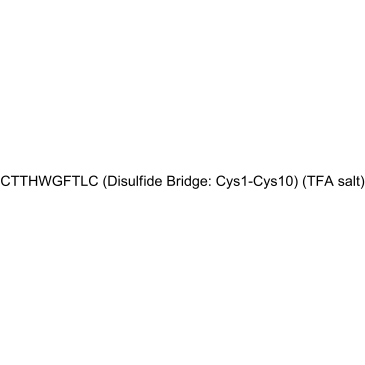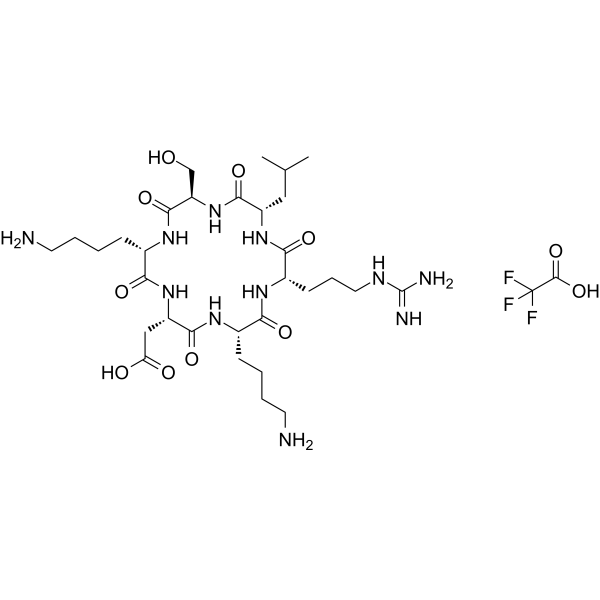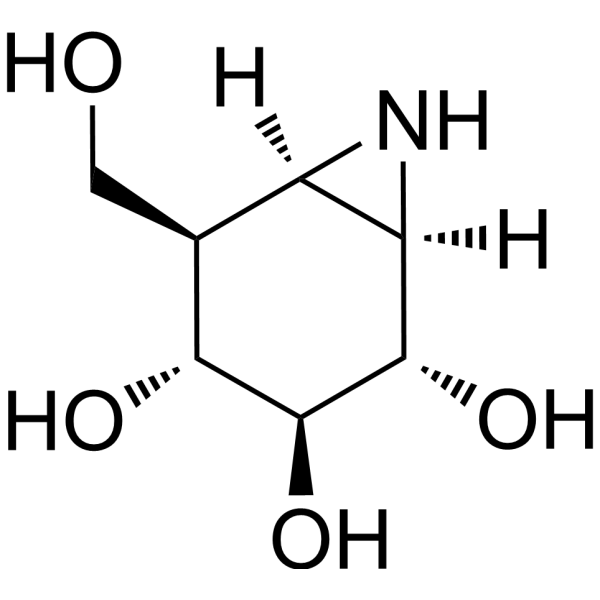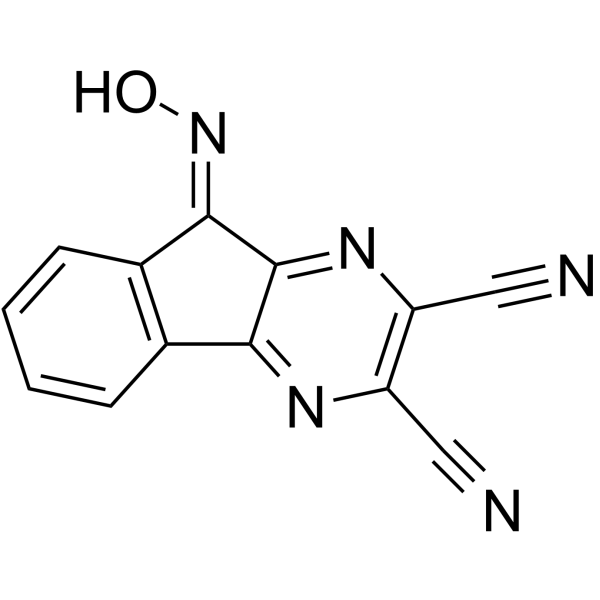Enzymes(酶)
Enzymes are very efficient and specific catalyst proteins which react with 1 or few types of substrates in biochemical reactions and are responsible for bringing about almost all of the chemical reactions in living organisms. Enzymes speed up reactions by providing an alternative reaction pathway of lower activation energy. Without enzymes, reactions take place at a rate far too slow for the pace of metabolism which means that they speed up the chemical reactions in living things.
There are 2 types of enzymes, ones that help join specific molecules together to form new molecules & others that help break specific molecules apart into separate molecules. Enzymes play many important roles ouside the cell as well. One of the best examples of this is the digestive system. For instance, it is enzymes in your digestive system that break food down in your digestive system break food down into small molecules that can be absorbed by the body. Some enzymes in your digestive system break down starch, some proteins and others break down fats. The enzymes used to digest our food are extra-cellular since they are located outside our cells & enzymes inside our cells are intra-cellular enzymes. Enzymes are used in ALL chemical reactions in living things; this includes respiration, photosynthesis, movement growth, getting rid of toxic chemicals in the liver and so on. Enzymes are proteins that must have the correct structure to be active. They are very easily affected by heat, pH and heavy metal ions.
Ribonucleoprotein enzyme catalytic activity is located in the protein part but for some the catalytic activity is in the RNA part. A catalyst is any substance which makes a chemical reaction go faster, without itself being changed. A catalyst can be used over and over again in a chemical reaction and does not get used up.
Enzymes lower the amount of activation energy needed by binding to the reactants of the reaction they catalyze, thus speed up the reaction and can process millions of molecules per second. Enzymes are typically large proteins with high molecular weight that permit reactions to go at conditions that the body can tolerate.
Enzyme nomenclature is based on what the enzyme reacts with & how it reacts along with the ending ase.
Enzymes must get over the activation energy hurdle.
Enzymes change how a reaction will proceed which reduces the activation energy and makes it faster. The more we increase the enzyme concentration the faster the reaction rate for non-catalyzed reactions. Enzymes that are catalyzed reactions also increase reaction rate at higher level of concentration but up to a certain point called Vmax which means that the enzyme has reached its maximum point. The reaction is limited by both the concentrations of the enzyme and substrate. Enzymes as catalysts take part in reactions which provide an alternative reaction pathway. Enzymes do not undergo permanent changes and remain unchanged at the end of the reaction. They only change the rate of reaction, not the position of the equilibrium.Enzymes as catalysts are highly selective by only catalysing specific reactions due to the shapes of the enzyme’s molecule.
Enzymes contain a globular protein part called apoenzyme and a non-protein part named cofactor or prosthetic group or metal-ion-activator. Changes in temperature and pH have great influence on the intra- and intermolecular bonds that hold the protein part in their secondary and tertiary structures.
Examples of cofactors are 1. Prosthetic group that are permanently bound to the enzyme. 2. Activator group which are cations (positively charged metal ions) & temporarily bind to the active site of the enzyme. 3.Coenzymes, usually vitamins or made from vitamins which are not permanently bound to the enzyme molecule, but combine with the enzyme-substrate complex temporarily. Enzymes require the presence cofactors before their catalytic activity can be exerted. This entire active complex is referred to as the holoenzyme.
Without enzymes, our guts would take weeks to digest our food, our muscles, nerves and bones would not work properly and so on…
Main Enzyme category groups:
Oxidoreductases:
All enzymes that catalyse oxido-reductions belong in this class. The substrate oxidized is regarded as a hydrogen or electron donor. The classification is based on 'donor:acceptor oxidoreductase'. The common name is 'dehydrogenase', wherever this is possible; as an alternative, 'acceptor reductase' can be used. 'Oxidase' is used only where O2 is an acceptor. Classification is difficult in some cases, because of the lack of specificity towards the acceptor.
Transferases:
Transferases are enzymes that transfer a group, for example, the methyl group or a glycosyl group, from one compound (generally regarded as donor) to another compound (generally regarded as acceptor). The classification is based on the scheme 'donor:acceptor grouptransferase'. The common names are normally formed as 'acceptor grouptransferase' or 'donor grouptransferase'. In many cases, the donor is a cofactor (coenzyme) that carries the group to be transferred. The aminotransferases constitute a special case.
Hydrolases:
These enzymes catalyse the hydrolysis of various bonds. Some of these enzymes pose problems because they have a very wide specificity, and it is not easy to decide if two preparations described by different authors are the same, or if they should be listed under different entries. While the systematic name always includes 'hydrolase', the common name is, in most cases, formed by the name of the substrate with the suffix -ase. It is understood that the name of the substrate with this suffix, and no other indicator, means a hydrolytic enzyme. It should be noted that peptidases have recommended names rather than common names.
Lyases:
Lyases are enzymes that cleave C-C, C-O, C-N and other bonds by means other than by hydrolysis or oxidation. They differ from other enzymes in that two (or more) substrates are involved in one reaction direction, but there is one compound fewer in the other direction. When acting on the single substrate, a molecule is eliminated and this generates either a new double bond or a new ring. The systematic name is formed according to 'substrate group-lyase'. In common names, expressions like decarboxylase, aldolase, etc. are used. 'Dehydratase' is used for those enzymes that eliminate water. In cases where the reverse reaction is the more important, or the only one to be demonstrated, 'synthase' may be used in the name.
Ligases:
Ligases are enzymes that catalyse the joining of two molecules with concomitant hydrolysis of the diphosphate bond in ATP or a similar triphosphate. 'Ligase' is often used for the common name, but, in a few cases, 'synthase' or 'carboxylase' is used. 'Synthetase' may be used in place of 'synthase' for enzymes in this class.
Products for Enzymes
- 41701(11)
- Activating Transcription Factor(3)
- Adenylate Kinase(10)
- AHCY(3)
- Aldolase(9)
- Asparaginase(5)
- Aurora Kinase(18)
- Beta Lactamase(3)
- Calcium and Integrin Binding(2)
- Calcium/Calmodulin-Dependent Protein Kinase(4)
- Carbonic Anhydrase(49)
- Casein Kinase(36)
- Cathepsin(52)
- Chitinase(5)
- Creatin Kinases(9)
- Cyclin(7)
- Cyclin-Dependent Kinase(18)
- Cyclophilin(23)
- Deaminase(14)
- Decarboxylase(12)
- Dehydrogenase(96)
- Discoidin Domain Receptor Tyrosine Kinase(2)
- DNA Polymerase(4)
- EGF Receptor(3)
- Endonuclease(6)
- Enolase(10)
- Enterokinase(5)
- Epimerase(3)
- Esterase(15)
- FGF Receptors(12)
- FK506 Binding Protein(10)
- Fructosamine 3 Kinase(2)
- Galactosidase(5)
- Glucosidase(32)
- Gluteradoxin(7)
- Glycogen synthase kinase(2)
- Glycosylase(10)
- Glyoxalase(3)
- Granzyme(7)
- Guanylate Kinase(2)
- Heparanase(2)
- Histone Deacetylase(3)
- Hydratase(10)
- Hydrolase(33)
- Hydroxylase(6)
- Isomerase(26)
- Jun N-terminal Kinase(1)
- Jun Proto-Oncogene(2)
- Kallikrein(26)
- Ligase(4)
- Lipase(14)
- Lipocalin(6)
- Lyase(9)
- LYVE1(3)
- Mitogen-Activated Protein Kinase(16)
- MMP(68)
- Mutase(11)
- Natural Enzymes(4)
- Nuclease(18)
- Nucleotidase(4)
- Nudix Type Motif(11)
- Other Enzymes(63)
- Oxidase(23)
- Oxygenase(12)
- Paraoxonase(3)
- Peptidase(41)
- Peroxiredoxin(10)
- Phosphatase(150)
- Phosphorylase(9)
- PI3-kinase(5)
- Polymerase(13)
- PPARG(2)
- Protease(15)
- Proteasome(54)
- Protein Kinase Akt1/PKB alpha(4)
- Protein Kinase-A(7)
- Protein Kinase-C(3)
- Protein Kinases(86)
- Protein Tyrosine Phosphatase(10)
- Reductase(60)
- Secreted Phospholipase A2(10)
- Serine Threonine Kinase(4)
- Sulfatase(8)
- Synthase(23)
- Synthetase(33)
- TGFBR(3)
- TGM2(3)
- TIMP(10)
- TPA(4)
- Transferase(156)
- Tyrosine Kinase(9)
- Ubiquitin Conjugating Enzyme(39)
- Uromodulin(4)
- VEGF Receptors(14)
- Transaminase(19)
- Hexokinase(6)
- TIE1(6)
- Cat.No. 产品名称 Information
-
GP21497
CS Human
Citrate Synthase Human Recombinant

-
GP22473
CSK Human
C-Src Tyrosine Kinase Human Recombinant

-
GP22474
CSNK1A1 Human
Casein Kinase 1 alpha 1 Human Recombinant

-
GP22475
CSNK1D Human
Casein Kinase 1 Delta Human Recombinant

-
GP22476
CSNK2A1 Human
Casein Kinase 2 alpha 1 Human Recombinant

-
GP22477
CSNK2A1 Human, His
Casein Kinase 2 alpha 1 Human Recombinant, His

-
GP22478
CSNK2A2 Human
Casein Kinase 2, Alpha 2 Prime Human Recombinant

-
GP22458
CSNK2B Human
Casein Kinase 2 Beta Human Recombinant

-
GP21498
CTDSPL Human
CTD Small Phosphatase-Like Human Recombinant

-
GP21499
CTH Human
Cystathionase Human Recombinant

-
GP21500
CTRB1 Human
Chymotrypsinogen-B1, Human Recombinant

-
GP21501
CTSA Mouse
Cathepsin-A Mouse Recombinant

-
GP21502
CTSB Mouse
Cathepsin-B Mouse Recombinant

-
GP21503
CTSB Mouse, Active
Cathepsin-B Mouse Recombinant, Active

-
GP21504
CTSD Human
Cathepsin-D Human Recombinant

-
GP21505
CTSD Mouse
组织蛋白酶 D 小鼠重组体

-
GP21506
CTSE Human
Cathepsin-E Human Recombinant

-
GP26141
CTSE Mouse
CTSE Mouse produced in Sf9 Insect cells is a single, glycosylated polypeptide chain containing 385 amino acids ( 21-397 a

-
GP21509
CTSF Human
Cathepsin-F Human Recombinant

-
GP26142
CTSF Human, Sf9
CTSF produced in Sf9 Baculovirus cells is a single, glycosylated polypeptide chain containing 474 amino acids (20-484

-
GP21507
CTSL Human
Cathepsin-L Human Recombinant

-
GP21508
CTSL Mouse
Cathepsin-L Mouse Recombinant

-
GP21510
CTSS Human
Cathepsin-S Human Recombinant

-
GP21511
CTSS Mouse
Cathepsin-S Mouse Recombinant

-
GP21512
CTSW Human
Cathepsin-W Human Recombinant

-
GP21513
CTSZ Human
Cathepsin-Z Human Recombinant

-
GP21514
CTSZ Human, Sf9
Cathepsin-Z Human Recombinant, Sf9

-
GP21515
CTSZ Mouse
Cathepsin-Z Mouse Recombinant

-
GP26143
CTSZ Mouse, Active
CTSZ Mouse Recombinant produced in Baculovirus is a single, glycosylated, polypeptide chain containing 292 amino acids (23-306 aa) and having a molecular mass of32

-
GC60114
CTTHWGFTLC, CYCLIC TFA
CTTHWGFTLC,CYCLICTFA是一种基质金属蛋白酶MMP-2和MMP-9的环肽抑制剂。对MMP-9的IC50约为8μM。

-
GP21516
CYB5R1 Human
Cytochrome B5 Reductase 1 Human Recombinant

-
GP21517
CYB5R2 Human
Cytochrome B5 Reductase 2 Human Recombinant

-
GC68925
cyclo(RLsKDK) TFA
BK-1361 TFA
cyclo(RLsKDK) (TFA) (BK-1361 (TFA)) 是一种特异性的金属蛋白酶 ADAM8 抑制剂,IC50 值为 182 nM。cyclo(RLsKDK) (TFA) 在炎性疾病和癌症中有潜在应用。
-
GC71410
Cyclophellitol aziridine
Cyclophellitol aziridine是环酚类似物和有效的β-葡萄糖苷酶抑制剂。

-
GP21521
Cyclophilin A E.Coli
Cyclophilin A E.Coli Recombinant

-
GP21518
Cyclophilin A Human
Cyclophilin-A Human Recombinant

-
GP21519
Cyclophilin A Mouse
Cyclophilin A Mouse Recombinant

-
GP21520
Cyclophilin A Rat
Cyclophilin-A Rat Recombinant

-
GP21522
Cyclophilin B Human
Cyclophilin-B Human Recombinant

-
GP21523
Cyclophilin B Human, His
Cyclophilin-B Human Recombinant, His Tag

-
GP21524
Cyclophilin B Mouse
Cyclophilin-B Mouse Recombinant

-
GP21525
Cyclophilin C Human
Cyclophilin-C Human Recombinant

-
GP21527
Cyclophilin D Human
Cyclophilin-D Human Recombinant

-
GP21526
Cyclophilin D Human, His
Cyclophilin-D Human Recombinant, His Tag

-
GP21528
Cyclophilin E Human
Cyclophilin-E Human Recombinant

-
GP21530
Cyclophilin F Rat
Cyclophilin F Rat Recombinant

-
GP21531
Cyclophilin F Rat Bioactive
Cyclophilin-F Rat Recombinant Bioactive

-
GP21532
Cyclophilin G Human
Cyclophilin-G Human Recombinant

-
GP21538
CYSH E.Coli
Phosphoadenosine phosphosulfate reductase E.Coli Recombinant

-
GC62302
Cysteine protease inhibitor-2
暂无
Cysteine protease inhibitor-2 是一种半胱氨酸蛋白酶 (cysteine protease) 抑制剂,详细信息请参考专利文献 US20070032499A1中的化合物 12。




